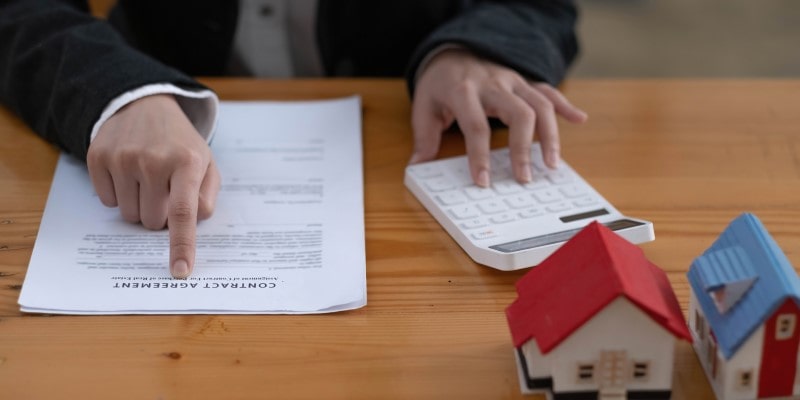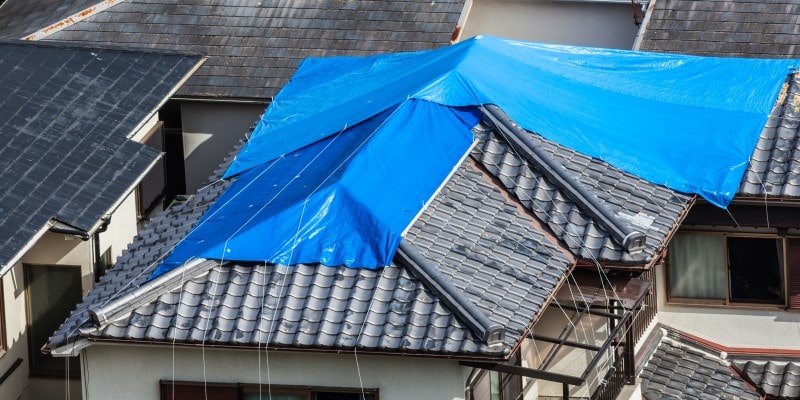Will Home Insurance Cover Damage to my Roof?

Most policies will cover sudden, unexpected damage to your roof caused by storms or falling debris. However, avoidable damage such as leaks caused by a lack of maintenance are likely to be met with resistance.
When dealing with damage to your home, it’s always comforting to know that your insurance will bail you out – unless it doesn’t. Staying on top of what your insurance does and doesn’t cover can be a pain, but knowing when you can and can’t make a claim is essential.
Some issues that home insurance can help cover are more obvious than others. Fire, for example, is a common problem that, in the case of most accidental blazes, tends to be something you can claim for. However, this isn’t the case for every part of your home. Your roof is the prime example.
There are lots of different types of damage that can befall your roof, from falling trees to leaks and general decay, but which of these are covered if any at all? Below we’ll give you a clearer idea of the answers, though keep in mind that individual cases may vary between different insurance companies.
Contents
- What Sort of Damage Can My Roof Suffer From?
- Which Common Roof Issues are Covered by Home Insurance?
- Does Home Insurance Cover Roof Leaks
- Will Home Insurance Cover My Belongings?
- How Do I File a Claim for a New Roof or Repair?
- How Can I Avoid Problems in the Future?
What Sort of Damage Can My Roof Suffer From?
Your roof is your first line of defence against harsh weather, and that means it’s also the first to get damaged. Keeping your roof in good condition is important, so it is always vital to keep on top of maintenance. Below is a list of some of the key hazards usually covered by insurance companies:
- Fire
- Flooding
- Theft
- Falling trees and branches
- Explosion
- Storms
- Burst pipe damage
- Lightning damage
- Vandalism
Which Common Roof Issues are Covered by Home Insurance?
Luckily, fires, lightning damage and explosions aren’t exactly what most homeowners would refer to as ‘common occurrences.’ Fallen trees and debris, on the other hand, are more frequent and with factors like climate change only increasing the rate at which such intense weather occurs, everything from flooding to storm damage is now more of a threat than before.

But it’s not all doom and gloom – luckily, the majority of this damage is covered by insurance companies. However, the best way to be sure is to check your policy thoroughly. Failing that, you can always call up your insurance provider and ask.
Another process you’ll want to carry out regularly is maintenance on your roof. We’ll go deeper into why this is and what you can do below, but one of the biggest benefits is that it makes your claim a more straightforward process.
If the insurance companies can rule out lack of maintenance as a factor behind damage to your roof, they’re more likely to accept your claim.
Does Home Insurance Cover Roof Leaks?

Leaks and general decay are problems you’re going to have a much tougher problem sorting if you allow them to get to the point where your property or belongings are damaged. This is because home insurance companies often won’t cover these types of damages.
Why is this? Well, in short, it is because the problem was avoidable. Had maintenance been carried out on a regular basis, the roof would not have been in such bad shape. At least, that is a common argument made.
Unfortunately, even sudden damage to your roof like falling branches won’t be covered by the majority of insurance companies if they can prove that the weaker structure of your roof was caused by a lack of maintenance.
Similarly, they may be a clause hidden away in your policy regarding the distance of trees to your home. In some cases, if trees are to close (close enough to risk damage if they fall) your claim can be declined out of hand. When choosing your policy be on the lookout for such terms and conditions.
Fortunately, in most cases, this gradual damage is avoidable, and Steps should absolutely be taken to avoid such problems. We will go more into these steps below.
Will Home Insurance Cover My Belongings?
In order to answer this question, we should start by breaking down what home insurance actually is. It is an umbrella term and is made of two different types of insurance that are mostly separate from one another. These are:
- Buildings insurance – the cost of repairing damage to the property, roof insurance included
- Contents insurance – the cost of repairing and/or replacing belongings
You can obtain these different insurance policies from different providers. However, most insurance companies will offer both as a bundle.
So, if your roof is insured for damage done, and you possess contents insurance as part of your home insurance package, then your belongings most likely will be covered as well. As long as the total value of those belongings corresponds with what you told your insurance provider.
How Do I File a Claim for a New Roof or Repair?
The moment you notice serious damage to your roof, it’s time to file a claim. Here’s what you need to do to get things sorted:
- The most important thing to do is to take any steps needed to minimise damage.
If it’s a leak, try to prevent or catch flowing water for example. However, if there is a clear threat to your health, you need to stay away from the problem and consult an emergency plumber, electrician etc.
- Ring your provider, with your policy number in front of you. Be prepared to provide as many details as you can about the problem.
They may have to send someone out to inspect the damage and confirm what you are saying is the truth.
- Take plenty of pictures of the damage, as well as any evidence the issue was not your fault.
If it was caused by severe weather, screenshot the weather report. CCTV or other evidence of vandalism will also help your claim.
- You may be asked to provide receipts and records that may provide evidence you recently worked on your roof, including examples of purchased maintenance products or services.
Always keep a record of your receipts and correspondence with tradespeople and building merchants.
- If all goes well, your insurer will then be able to offer compensation. Depending on the damage this may involve your insurance company will cover some or all your roof repairs.

How Can I Avoid Problems in the Future?
The best way to avoid problems in the future is to keep on top of maintenance. Check your roof over regularly and, if you are able, keep photo evidence of your checks, with dates and times accompanying the images. If you spot any issues, such as loose or cracked tiles or missing components, set about fixing them as soon as possible.
If you are not able to solve the problem yourself, it’s best to call in an expert before trying to contact insurance companies (especially if the problem is minor, in which case insurance companies are best left out of the conversation altogether). Keep emails, quotes and receipts as evidence should your roof ever need insurance coverage.
As you may have concluded yourself, the problems that home insurance does and doesn’t cover varies quite considerably, but to get a rough assumption of whether you will be covered depends on a key question – was the damage sudden and/or unexpected? It will also depend on how avoidable the issue was, and what steps you took to prevent it from happening.
The best strategy is to prepare – keep receipts, take photographs, and keep on top of maintenance.